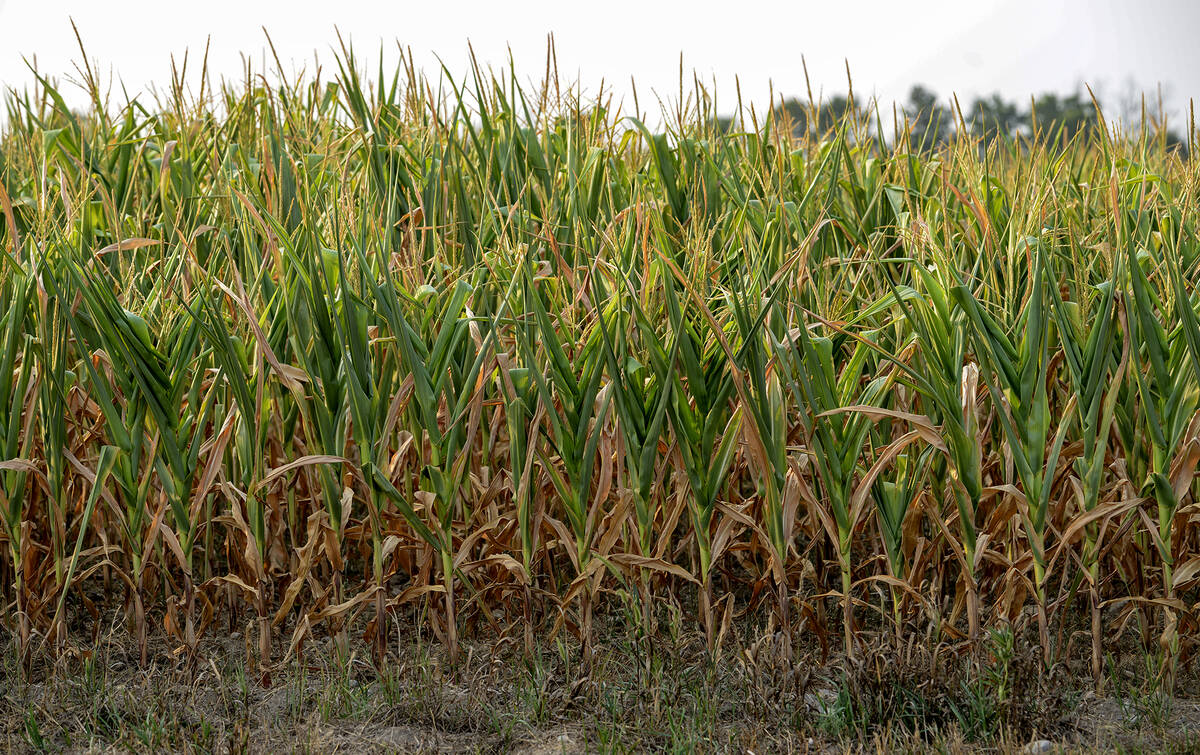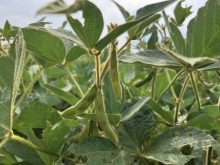The effects of a wet July are appearing in soybean fields across parts of southern Ontario, and although plants appear to be yellowing, it’s too early to assess the impact.
Anecdotal reports of one, one-and-a-half, two and four inches of rain in separate events have had a visible effect on many growers’ fields, particularly in Perth County and down through Middlesex, Chatham-Kent, Essex and in Niagara.
According to Ontario provincial soybean specialist Horst Bohner, there are many fields with “tile-run” soybeans, which look better over tile runs where soil is drier. In untiled fields with heavy clay soils, there are some rough-looking soybeans.
Read Also

Extreme variability marks Ontario’s 2025 corn crop
The yield potential of Ontario’s 2025 corn crop was lost in some areas due to extreme dry conditions.
“It just depends on how much rain they’ve had in a specific area and whether conditions had time to dry up or if they just keep getting hit with rain,” says Bohner.
Bohner is frequently asked about the value of applying nitrogen to help soybeans recover. Many growers believe yellow soybeans suffer from nitrogen deficiency, which Bohner concedes is part of the issue but the entire answer.
With “wet feet”, nitrogen isn’t the only nutrient that’s deficient. Most of the others are as well, and that can lead to the onset of root rot. It can also kill plants in waterlogged areas.
“It all depends on how long they sit wet,” says Bohner. “Soybeans don’t like wet feet but they can tolerate it for a certain amount of time and that depends on soil type and how much disease is present. I’m still hopeful that a lot of these fields will recover nicely and that’s usually what happens, as long as the rain stops.”
Bohner has trials around Stratford that were waterlogged for roughly three weeks leading up to the final week of July. He believes those plants could recover.
In terms of the larger picture, there’s little to be done. The average yield response to a nitrogen fertilizer application is roughly two bu./ac. As Bohner noted in a 2021 Field Crop News column, the exception is “if there is a complete nodulation failure or severe disease.”
A small amount of nitrogen isn’t enough to help the plant, he concluded. It might look better at first, but the yield will not improve enough to justify the cost.
“Your primary problem is this waterlogged situation and you can’t overcome this with one nutrient,” says Bohner. “It’s mostly the diseases that end up really hitting you – it’s usually that root rot complex that sets in and finally kills the plant. If you get too many of those, the rest of the soybean plants can’t fill in.”
If it stops raining for a few weeks, the resilience of soybeans will show through.
More field damage
The other factor that has growers thinking about remedial action comes from localized hail damage.
“You have to determine whether the stem has been broken,” said Bohner. “Most of the pictures I’ve seen have been defoliation to some extent but not actual plant death. Give them a week and they’ll push out new leaves and often the yield potential is still 70 to 80 per cent of what it could have been, even if you’ve lost half the leaves.”
Applying a foliar fungicide to hail-damaged crops may help, but there’s no indication that plants will grow faster or repair themselves as a result.













